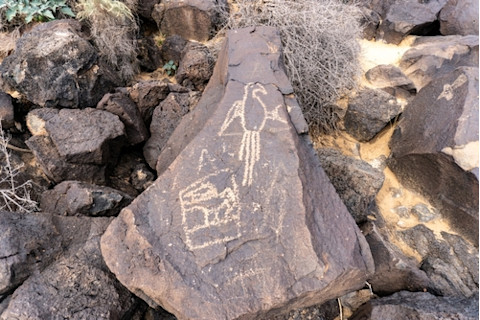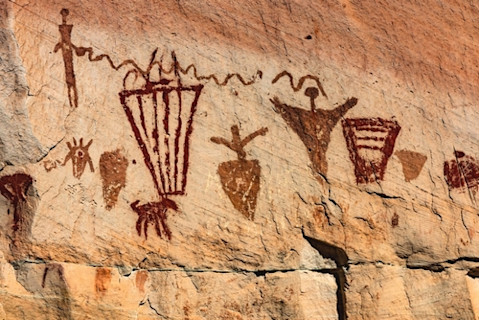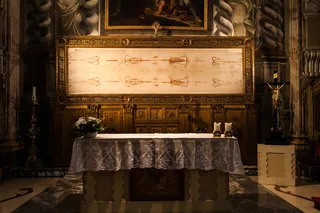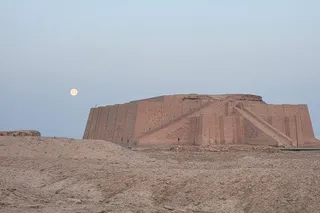Park rangers at Carlsbad Caverns National Park recently posted a photo on social media of a Flaming Hot Cheetos bag dropped carelessly by a visitor. The visitor might have thought the lost snack was merely a piece of garbage someone else could have picked up. But the post explained how the food source disrupted the cave’s fragile ecology and sparked mold growth.
Humans don’t always recognize how delicate caves are and that they must be approached carefully—or left alone completely. Along with a fragile ecosystem, some people may not realize that caves contain ancient art and that these places are considered sacred spaces, and preservationists say they must be treated with respect. Here are some you can visit in the U.S., as long as you’re respectful.
Top Caves in the U.S. for Ancient Rock Art
Visitors keen on seeing cave art in the U.S. should focus on rock art on overhangs, canyons, or bluffs. Dark zone cave art — meaning art that is deep within a cave beyond external light — is typically off-limits to the public.
“There is a safety issue involved with caves. You can’t take the public in. It’s just too dangerous,” says Jan F. Simek, a distinguished professor of anthropology emeritus at the University of Tennessee-Knoxville.
1. Dunbar Cave System — Clarksville, Tennessee

9Credit: Manny_stock/Shutterstock)
Manny_stock/Shutterstock
The Dunbar Cave State Park in Tennessee is one of the few places in the U.S. where visitors can view ancient art.
The caves have been part of the state park system for 51 years, but the discovery of the cave art only happened in the last few decades, says David Britton, the Dunbar Cave State Park manager.
“Nineteen years ago, our lives were changed forever when a park ranger and historian stumbled across artwork in the cave that we now know dates to the thirteenth, fourteenth century,” Britton says.
Visitors will also notice graffiti from when the cave was commercially used up until 1972. “Unfortunately, the common practice of visiting a cave was to put your name on it,” Britton says.
2. Petroglyph National Monument — Bernalillo County, New Mexico

(Credit: EWY Media/Shutterstock)
EWY Media/Shutterstock
Visitors can see thousands of ancient rock carvings while hiking in the Petroglyph National Monument. The Pueblo people engraved most of the carvings between 1300 and the late 1600s.
The petroglyphs were not made randomly, and they had cultural and religious importance to the people who made them. Simek says they are “very beautiful, very important” and an opportunity for people to view ancient art in the Americas.
“All of these, whether in caves or open air, are paintings or engravings done by experts in producing artwork in these ancient communities, and they were sacred,” Simek says.
3. Horseshoe Canyon — Canyonlands National Park, Utah

(Credit: Abbie Warnock-Matthews/Shutterstock)
Abbie Warnock-Matthews/Shutterstock
Hikers willing to take a seven-mile trek can see ancient rock art dating back to 2000 B.C.E. The Great Gallery is a well-preserved display of painted pictographs and petroglyphs. It includes life-sized figures adorned with intricate designs.
Simek says the pictographs are done in the “Barrier Canyon” style, which dates back 4,000 years and can be seen elsewhere in Canyonlands National Park and Utah.
4. Lower Pecos River Region — Amistad National Recreation Area, Texas

(Credit: Arabel Mortimer/Shutterstock)
Arabel Mortimer/Shutterstock
More than 300 pictograph sites have been documented in the caves, overhangs, and rocks in the Lower Pecos River Region.
“This is an incredible series of rock art sites,” Simek says.
The pictographs date back 10,000 years, and although many are on private property and off-limits to visitors, tours are available at the nearby Seminole Canyon State Park & Historic Site.
Read More: Why Did Our Paleolithic Ancestors Paint Cave Art?
Respecting Sacred Cave Sites
Places like Horseshoe Canyon and Petroglyph National Monument are self-guided, which means anyone can approach the ancient art. Simek says it’s important for people to remember that these spaces are considered sacred and should be treated with reverence.
Similarly, the creators of cave art believed the caves were a portal to the underworld, and the artwork in the caves was likely a symbolic tribute to the spirits below or a form of communication with them.
“Caves were tangible entry points into the underworld, and paintings reflect that,” Simek says.
The Recent Popularity of Cave Art
Cave art in the western U.S. has been far more recognized and recorded than cave art in the eastern part of the country, Simek says. Cave art in the West tends to be more visible in the open, while rock art in the East is often deep within dark caves and requires special equipment to identify.
In the Dunbar Cave System, for example, the cave had been in use for hundreds of years. But only in the last few decades did the art within become apparent. “The study of cave art is relatively new,” Britton says.
Britton says the park partnered with Simek and his research team to further examine and identify the art within. They also worked with the descendants of the cave art creators to consider how best to protect the cave as a sacred space.
Read More: 5 of the World's Most Fascinating Cave Paintings
Protecting Historical Cave Art
Simek says the best form of protection for many caves is to keep them off-limits to the public. Since many in the eastern U.S. are on private property, researchers and local officials keep the exact location under wraps to protect them.
Cave desecration can involve the careless discarding of a Flaming Hot Cheetos bag. But it can also be more sinister.
“The horror is that people go and spray paint these sites far more than you think. Out of meanness, as far as I can tell, and lack of understanding, these sites require protection,” Simek says.
Read More: Rescue Archaeology Prevents History From Being Erased
Article Sources
Our writers at Discovermagazine.com use peer-reviewed studies and high-quality sources for our articles, and our editors review for scientific accuracy and editorial standards. Review the sources used below for this article:
Professor of anthropology emeritus at the University of Tennessee-Knoxville. Jan F. Simek
National Park Service. What are Petroglyphs
National Park Service. Horseshoe Canyon
National Park Service. How to See Pictographs















